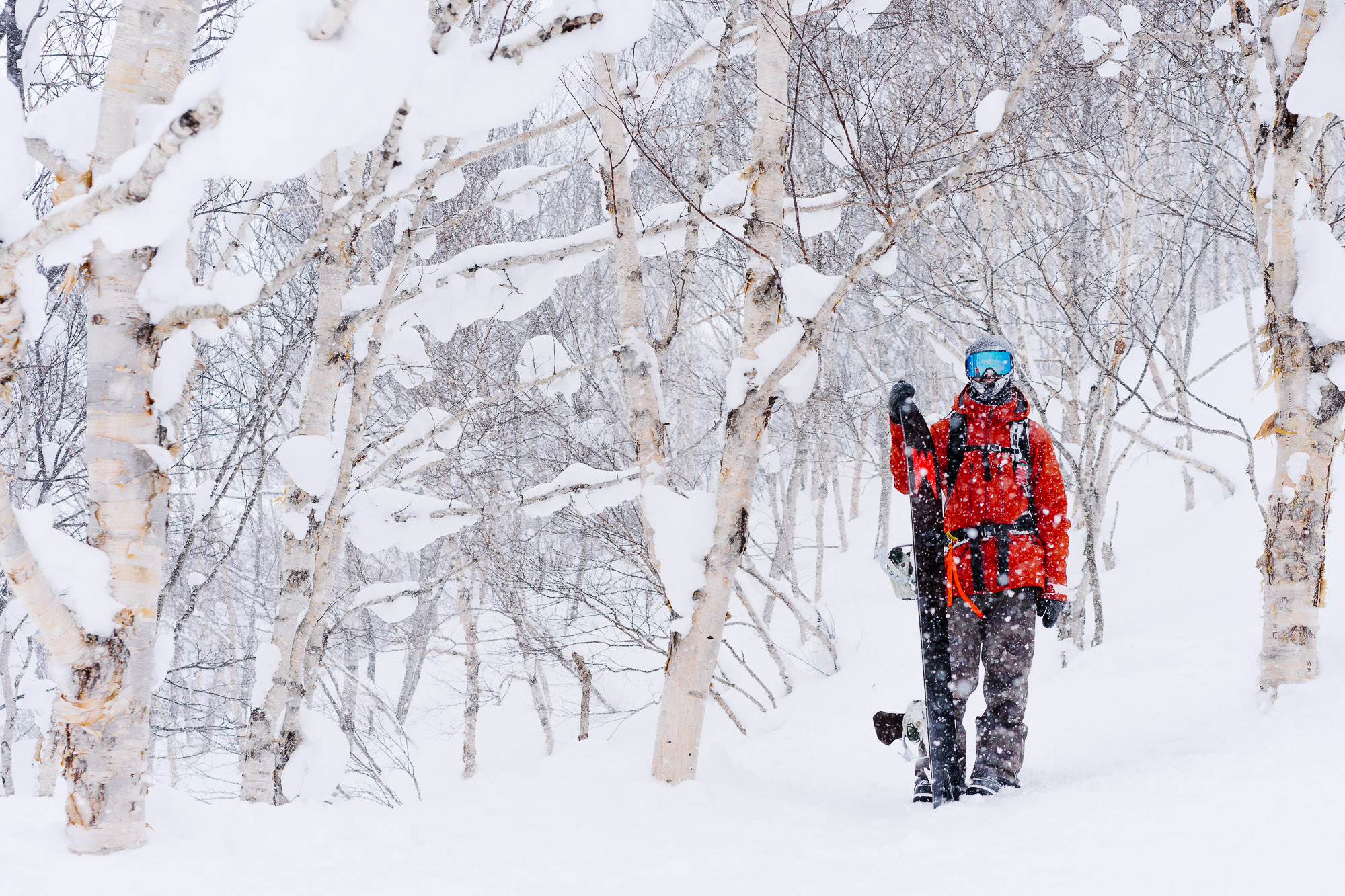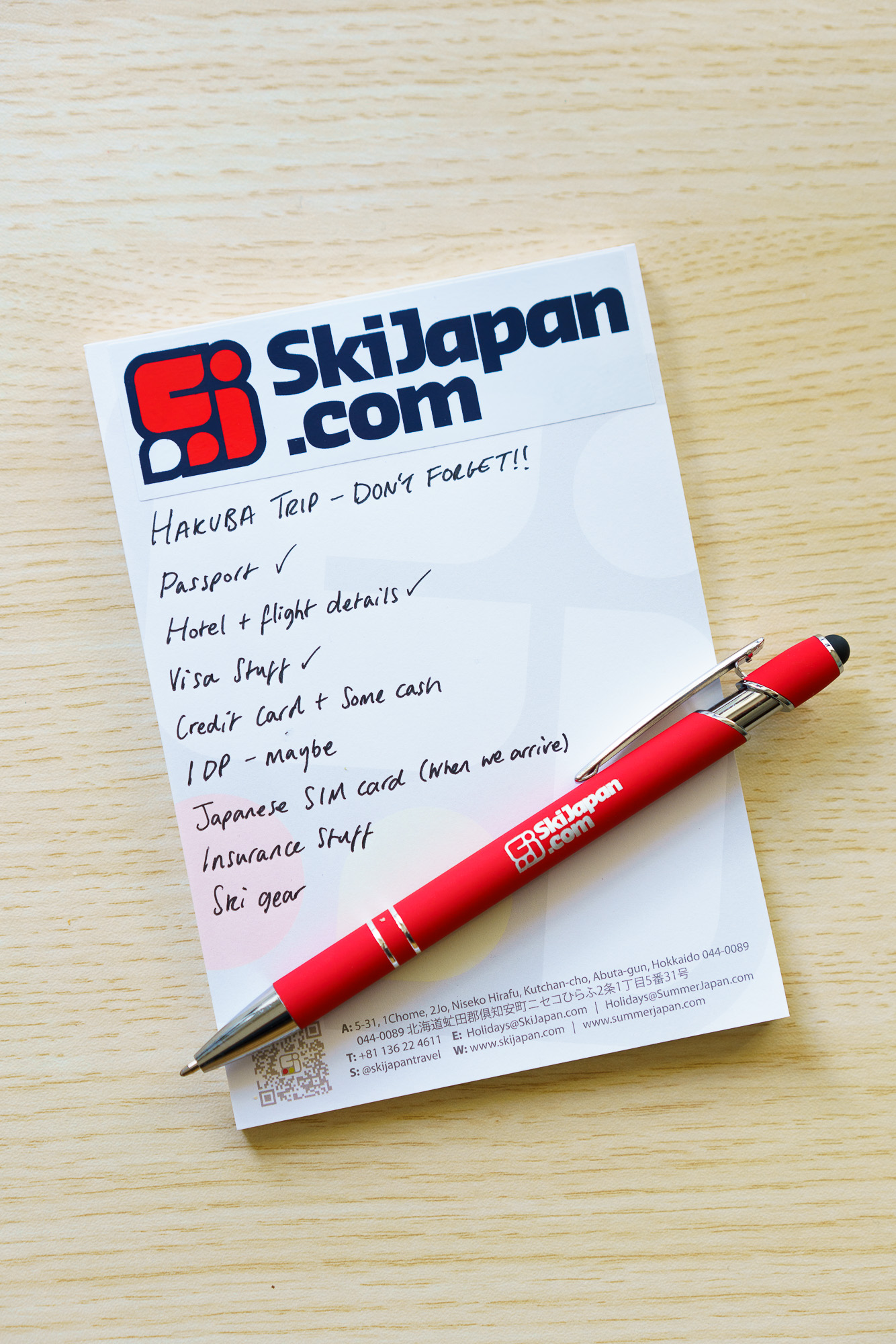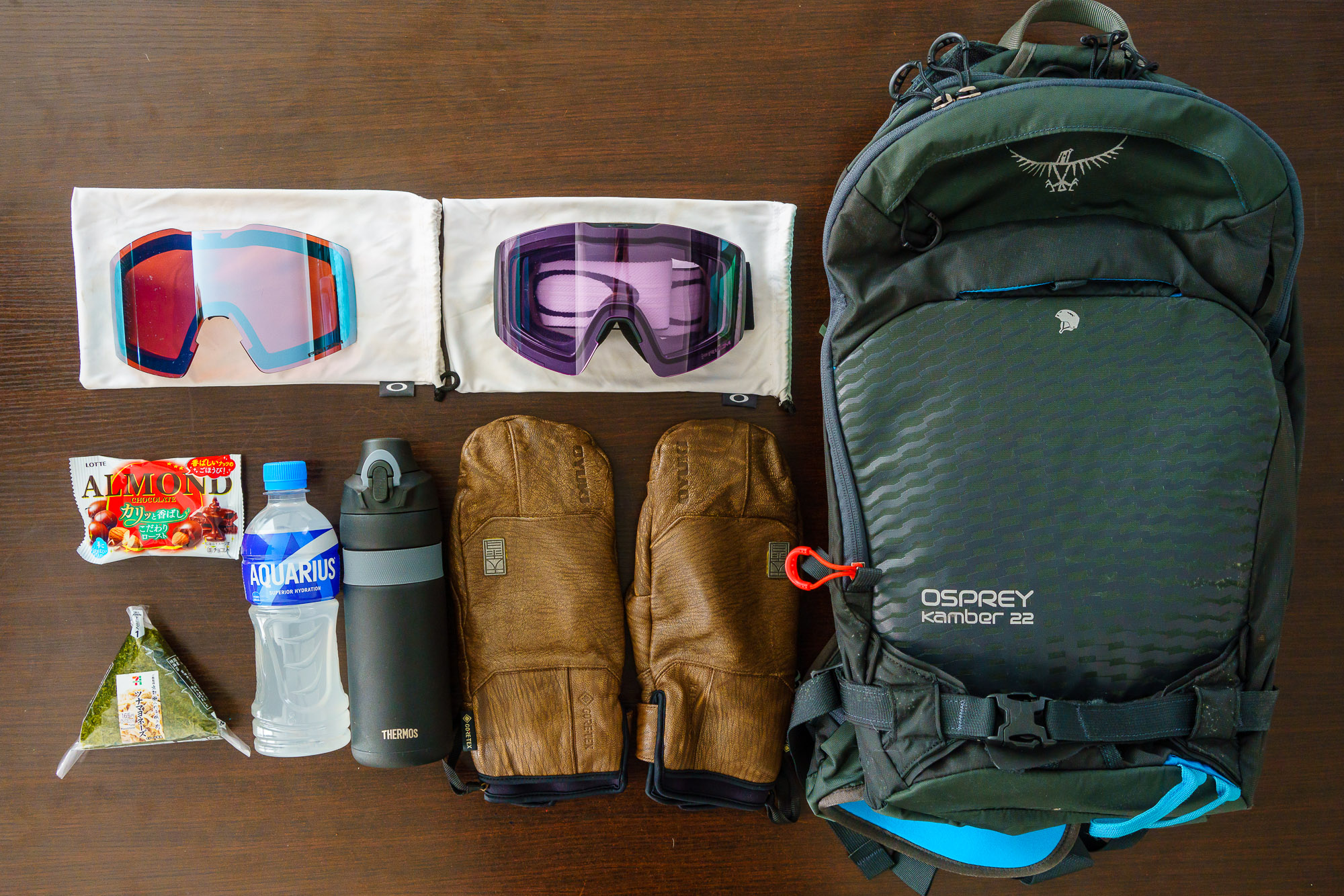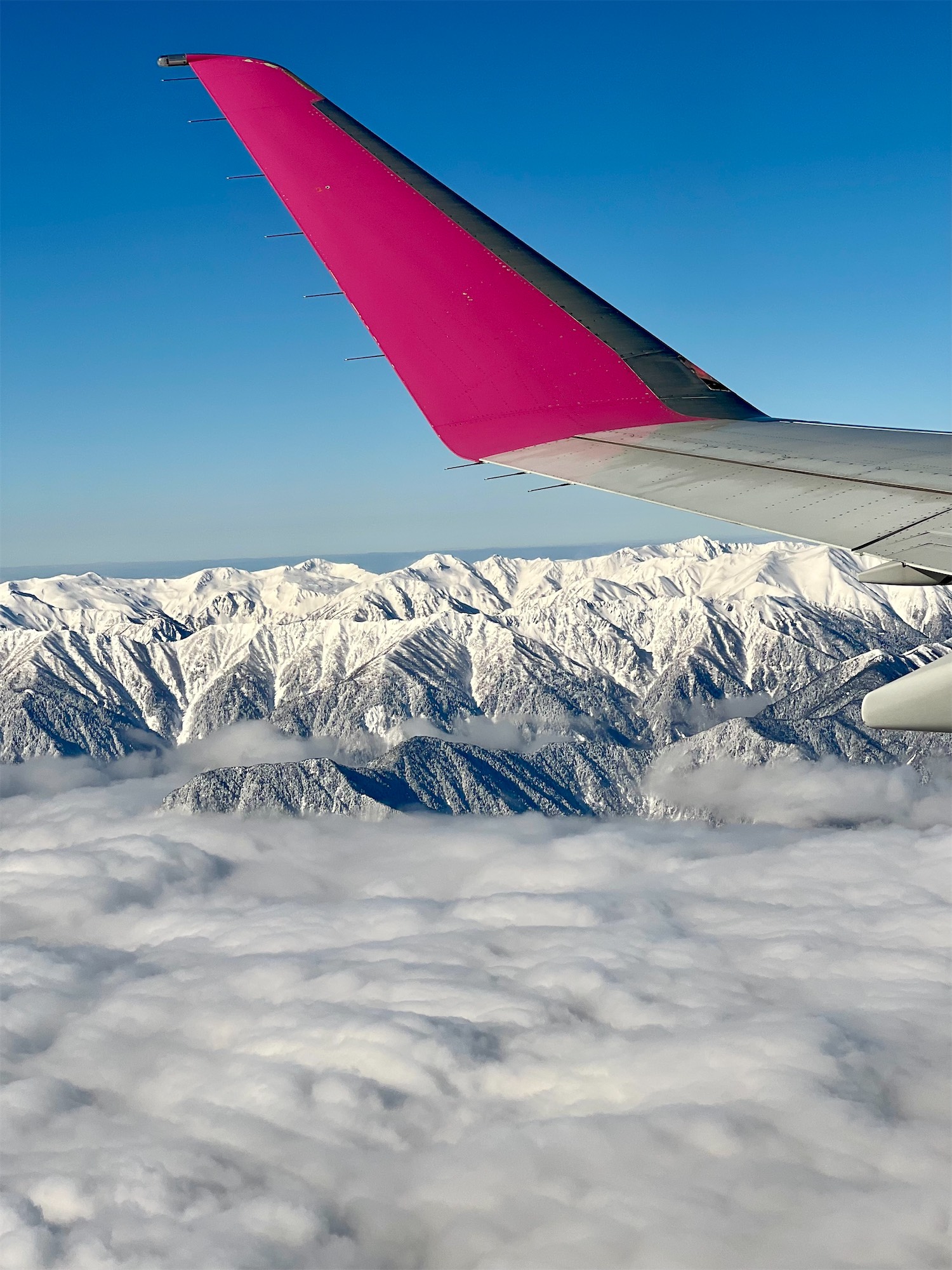Japan Ski Holiday Checklist for 2025-26: Don't Leave Home Without These Essentials
Japan’s ski conditions are unique, think knee deep snow, freezing wind, and small indoor spaces. Packing smart can mean the difference between a dream trip and a soggy disaster.
If you’re used to resorts where fresh snow is a rare treat, Japan will be like a revelation. The powder piles up day after day, which is great – but only if you’re geared up for it. Once the taps are on, there’s no stopping them, so you’ve got to prepare for the pow.
We made this Japan ski trip checklist to make planning your holiday easy, and covered everything you need. We’ll also mention small but vital items you can pick up locally or rent, perfect if you forgot something or want to travel light.
Why Japan’s Ski Trips Require Special Packing
Before we dive into the checklist, it’s worth understanding what makes Japan different:
- Extreme snowfall. Top resorts like Niseko, Furano and Hakuba get 10-15 metres of snow over the winter. Waterproof outerwear and dry layers are non-negotiable
- Hokkaido temperatures are consistently below zero, whilst Hakuba gets more sunshine and even light rain at village elevation on the rare occasion in the early/late season. Make sure you plan accordingly
- You’ll often move between the cold slopes and warm, narrow indoor spaces meaning quick-change layering is key
- With crowded trains, buses, and luggage transfers, lightweight and organised packing makes travel smoother
Fully prepared for a cold winter!
Get These Sorted First
Let’s start with the boring essentials. Without these, your trip’s over before it even begins.
Travel documents & money
- Passport and printed copies of your flight/hotel details
- Visa and related paperwork (if required) and travel insurance with winter sports coverage
- Credit/debit cards
- Cash (some places don’t take card) – a few ¥10,000 notes should cover your food and beers for the first few days
- International driver’s license – even if you’re not planning on renting a car, people often change their mind. They’re cheap and easy to get, so bring one just in case
While most places in Japan accept credit cards, there are still places that do not. Keep a small amount of cash for those times. If you run out, most convenience stores have ATM’s.
Note: If you plan on heading out to the backcountry you’ll need extra insurance coverage. If you get injured outside of the resort boundaries, it’ll cost you ¥100,000 to get rescued. Backcountry rescue will cost significantly more, so be sure to check your insurance policy T&C’s thoroughly.
Pro tip: Forget about paying international charges on credit/debit cards – apply for a Wise debit card in advance so you can pay in the local currency.
Electronics & connectivity
- Japan plug adapter (not needed if you’re coming from USA – Japan uses the same plug type)
- Mobile phone and a Japanese SIM card to stay connected with your crew (buy one at the airport when you land)
- Portable charger – cold weather drains phones fast
On-Slope Essentials
When it comes skiing, the golden rule is to layer smart. Multiple lightweight layers that allow you to move freely are better than a few bulky layers. Temperatures swing as you move from the freezing slopes to restaurants with the heating on full blast, so you need flexibility in order to not be a sweatty mess. Let’s start from the inside out:
1. Base Layers (Next to Skin)
- Thermal tops & leggings made from merino wool, synthetics or blends of the two
- Quality wool/blend ski socks. If you’re feet get sweatty, you’re gonna have a bad day.
2. Mid Layers (Insulation)
- Down jacket or lightweight fleece.
Tip: Check out XTM’s base and mid layers (pictured on the right) available from our shops at 1F in Hakuba Gateway Hotel and next to the Family Chairlift in Niseko.
Keep your layers light. Bulky layers make it harder to move. Besides, you’ll warm up once you start skiing.
3. Outer Layers (Weather Protection)
- Waterproof, breathable hardshell jacket and bib or pants with a powder skirt. Thick jackets not recommended – if you get too hot, you’ll sweat and the warm, moist air will rush up your neck and steam up your goggles. Insulate with your mid layer instead as it’s easy to regulate your body temperature by removing light layers and rolling them up in to your day pack
- Thin gloveliners with waterproof gloves or mittens over the top. Mitts are warmer, gloves have more dexterity
- Neck warmer/buff, ski balaclava, helmet
- Small, light backpack for snacks, drink etc
Forgot something? No worries! You can grab quality gloves, mitts, glove liners, helmets, hats, and goggles at our shop when you arrive. We keep the kind of stuff everyone forgets but can’t ski without. Come find us at NBS Snowsports right next to the Family Chairlift in Niseko or at 1F in Hakuba Gateway Hotel.
4. Daypack must-haves:
When you’re mid-mountain in heavy snow, having the right little things can make a huge difference.
- Spare goggles or interchangable dark/mirror lenses for the rare mid-season bluebird and sunny spring sessions. 90% of the time you’ll be using low light lenses but having spares makes the difference when you need them
- Snacks or protein bars. Swing by the konbini before you hit the slopes. My go to is a tuna mayo onigiri and a packet of chocolate covered almonds *chefs kiss*
- Water bottle or a thermos with hot tea or coffee
- Spare gloves/mitts – if snow melts inside your mitts you’re gonna have a bad day
- Optional: Hand & toe warmers or “kairo” for super cold days (sold everywhere in Japan’s convenience stores)
Off-Slope Essentials
A Japan ski trip is about more than just skiing. Make sure you pack for life off the slopes too.
- Waterproof boots with solid traction. The snow gets deep, so make sure your boots are tall enough – up to halfway between your ankle and knee should be sufficient
- Casual warm clothes for dining out and going to the pub
- A small towel for onsen visits – can also be purchased at the onsen
- Light backpack for short sightseeing trips
- If you’re renting a car, make sure it comes with a snow brush and ice scraper or buy one from DCM in Kutchan. You’ll be clearing a good 25cm of snow off the car every morning
Cultural tip: Tattoos are still taboo at some onsens, even in places like Niseko and Hakuba. If you have visible ink, check policies or look for “tattoo-friendly” hot springs and bring a tattoo cover just in case.
Luggage & Packing Tips for Japan Travel
Flying with ski gear can be tricky. Here’s how to keep it smooth.
- Check airline allowances: Some carriers may let you bring a ski/snowboard bag as part of your checked luggage, but check in advance to avoid any unexpected charges
- If you’re traveling between resorts, or have a couple non-ski days at the start/end of your trip, plan those days in advance and send bulky luggage ahead via courier (Takkyūbin “Black Cat” have service counters at all major airports and across most towns and cities) so you can enjoy sightseeing without lugging heavy gear between hotels
- Most accommodations will help you to arrange sending your luggage back to the airport. Check with them in advance, send your luggage, spend a few days sightseeing before heading back home then pick your luggage up at the airport ready to check in.
- If your return flight departs early, stay at an airport hotel. Blizzards are common and public transport often gets cancelled. It’s not worth risking a missed flight. We can assist we booking for New Chitose departures, so let us know if required
Pro tip: Keep your gloves, beanie and jacket handy. You’ll need them the moment you step outside the airport, particularly at New Chitose Airport in Hokkaido.
Safety & Health Must-Haves
While Japan’s ski resorts are well organised and safe, preparation is still essential, especially if you plan on venturing off piste or into the backcountry.
- Travel insurance that covers snow sports and backcountry
- Avalanche gear for backcountry touring (at the minimum: beacon, shovel, probe, headtorch, food & drink, compact whistle and a basic first aid kit)
- Check your medication legality on Japan’s Ministry of Health website
- Save any phone numbers you might need in an emergency into your phone. If you get injured whilst skiing you might need them. At the very least, your hotels front desk should be able to contact the ski resort to send ski patrol out for you. Japanese emergency services can be reached at 119.
That about wraps it up! Now you’re ready to handle knee deep snow on the streets, and navigate airports, trains and buses in comfort.
Just remember these things:
- Be smart with your layers. If you’re too hot, it’s easier to take off a light down mid-layer and roll it up small into a backpack than it is to stuff a bulky parka jacket into a suitcase, only to have to unpack it again when you go back outside
- Stay dry and bring spare goggles/lenses, base layers and plenty of socks in case you can’t dry them off ready for the next day of skiing.
- Bring some cash for the first few days. Use the ATM at a convenience store if needed
Need any last minute essentials? Come visit us in Niseko or Hakuba.






